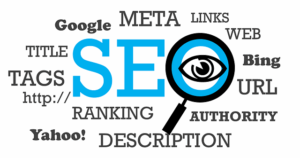Course Descriptions and Syllabi are essential for effective course management, providing clear roadmaps for instructors and students. Well-crafted syllabi include course objectives, detailed topic coverage, grading policies, assignment due dates, and instructor contact info. Integrating learning objectives enhances clarity and focus, while a balanced design and meticulous proofreading ensure engaging materials free of errors. These tools empower students to make informed decisions and set a positive tone for the learning experience.
Get your academic materials ready for review with our comprehensive guide. We’ll walk you through preparing effective Course Descriptions and Syllabi. From understanding the target audience and purpose of course descriptions, to crafting concise syllabus elements and integrating learning objectives, this article covers it all. Learn how to enhance visual appeal and usability while ensuring accuracy through proofreading and feedback. Optimize your academic documents for clear communication and student success.
- Understand the Purpose and Audience of Course Descriptions
- Crafting Clear and Concise Syllabi: Key Elements
- Integrating Learning Objectives into Course Documents
- Visual Appeal and Usability: Designing for Effective Communication
- Proofreading and Feedback: Ensuring Accuracy and Quality Assurance
Understand the Purpose and Audience of Course Descriptions
Course descriptions and syllabi are essential documents that serve as a roadmap for both instructors and students. They outline the core content, learning objectives, and assessment methods of a course, providing a clear understanding of what to expect. When preparing these documents, it’s crucial to keep the intended audience in mind—whether they are prospective students evaluating course options or current enrollees seeking guidance.
For prospective learners, detailed course descriptions offer a glimpse into the course’s scope and depth, helping them make informed decisions about their academic pursuits. On the other hand, syllabi become a valuable reference for current students, offering structured information on topics, assignments, and deadlines. A well-crafted description and syllabus ensure that everyone involved has a shared understanding of the course’s purpose and what it entails.
Crafting Clear and Concise Syllabi: Key Elements
Creating clear and concise syllabi is essential for effective course delivery. A well-structured syllabus serves as a roadmap for both instructors and students, ensuring everyone understands expectations, learning outcomes, and assessment criteria. When crafting your syllabus, include key elements like course objectives, detailed topic coverage, grading policies, assignment due dates, and contact information for the instructor. These components provide a comprehensive overview, enabling students to make informed decisions about their academic pursuits.
Additionally, incorporate clear language and avoid jargon to enhance accessibility. Organize content logically, using headings and subheadings to break down complex topics. Include any relevant resources or references that can support student learning. Remember, the syllabus is a critical document for Course Descriptions and Syllabi, setting the foundation for a successful academic experience.
Integrating Learning Objectives into Course Documents
When crafting course descriptions and syllabi, integrating learning objectives is a strategic move that ensures clarity and focus for both instructors and students. These objectives serve as a roadmap for the entire course, outlining what learners are expected to achieve by the end of the academic journey. By seamlessly weaving them into the document structure, educators can effectively communicate the depth and scope of each module or lesson.
For instance, within a course syllabus, learning objectives can be presented alongside each unit, detailing specific skills or knowledge students will acquire. This practice allows for better organization and alignment of content with stated goals. In a well-structured course description, these objectives provide a clear picture of what participants can expect to gain, enabling them to make informed decisions about their educational choices.
Visual Appeal and Usability: Designing for Effective Communication
When crafting Course Descriptions and Syllabi, visual appeal and usability are key aspects that often determine how effectively your content communicates with students. A visually appealing document, characterized by a clean layout, legible typography, and strategic use of whitespace, enhances readability and makes navigating complex information easier. This is crucial for engaging students from the moment they lay eyes on your course materials.
Usability involves ensuring that your Course Descriptions and Syllabi are not only visually pleasing but also practical. Well-organized content with clear headings, concise language, and a logical flow of information allows students to quickly grasp key details about the course, including learning objectives, assessment methods, and required resources. This practicality facilitates effective communication between instructors and students, setting a positive tone for the entire learning experience.
Proofreading and Feedback: Ensuring Accuracy and Quality Assurance
When preparing course descriptions and syllabi for review, meticulous proofreading is an absolute necessity. This step goes beyond simple editing to ensure that every detail in your academic documents is accurate and consistent. Start by checking for any grammatical errors or typos that may have slipped through during initial drafting. These mistakes can significantly impact the quality of your course offerings and create a poor first impression on potential students.
Encourage feedback from colleagues, peers, or even focus groups to gain diverse perspectives. Fresh eyes can often spot inconsistencies, unclear language, or areas for improvement in both course descriptions and syllabi. This collaborative approach ensures that your academic materials are not only error-free but also effectively communicate the essence of each course, meeting the expectations of your target audience.
Creating comprehensive and well-organized course descriptions and syllabi is essential for effective communication with students, faculty, and administrators. By understanding the purpose and audience of these documents, crafting clear content, integrating learning objectives, and focusing on visual appeal and usability, you can ensure that your course offerings are accurately represented. Regular proofreading and feedback loops further guarantee accuracy and quality assurance, fostering a positive learning environment for all involved. Effective course descriptions and syllabi are not just documents; they serve as the roadmap to successful academic experiences.
